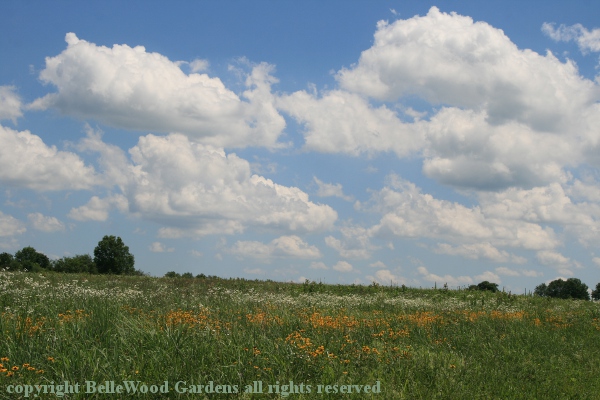
.
If you have any comments, observations, or questions about what you read here, remember you can always Contact Me
All content included on this site such as text, graphics and images is protected by U.S and international copyright law.
The compilation of all content on this site is the exclusive property of the site copyright holder.
Shinrin Yoku and Among Trees Book Reviews
Scroll down for second book review
Saturday, 22 December 2018
Once upon a time I was a student taking a two week intensive seminar on Japanese garden art at the Kyoto University School of Art and Design. A professor told us that a garden should have more than just visual beauty. It should also appeal to our other senses of sound, scent, touch, and taste.

the sound of wind in a field of grasses that brushes against skin as you walk though it,
the scent of new mown grass, the taste of a juicy stem of grass, pulled free and nibbled.
spiritual peace and well-being
In a New York Times Opinion piece by Ross Douthat about the rise of paganism that appeared on December 12 he suggests that the concept of paganism is "that divinity is fundamentally inside the world rather than outside it, that God or the gods or Being are ultimately part of nature rather than an external creator, and that meaning and morality and metaphysical experience are to be sought in a fuller communion with the immanent world rather than a leap toward the transcendent." Further, "it sees the purpose of religion and spirituality as more therapeutic, a means of seeking harmony with nature and happiness in the everyday . . . "
I find the Japanese concept of shinrin yoku, forest bathing, as akin to this.
Not taking a shower in the woods. Rather, quietly immersing yourself in nature.
A recently published pair of books from Timber Press explores this concept.
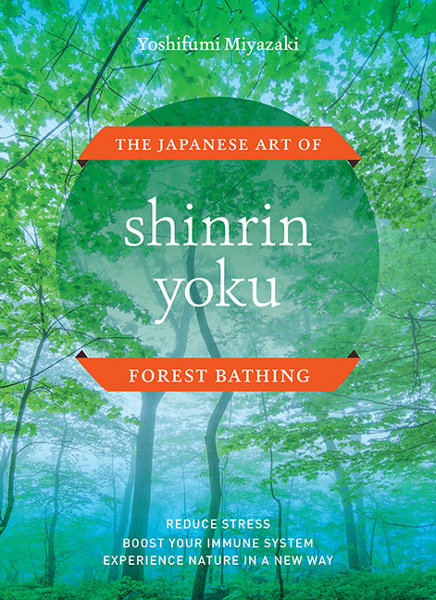
courtesy Timber Press, from Shinrin Yoku, photo credit Robert Llewellyn
The Japanese Art of Shinrin Yoku Forest Bathing by Yoshifumi Miyazaki
The author, who has received multiple awards for his work on the effects of forest therapy, is the deputy director of Chiba University's Center for Environment, Health and Field Sciences. His book tries to be something to everyone, from what to do while walking in the forest to discussion of experiments he has conducted into the benefits of shinrin yoku and the science behind it. The effort to address all of these areas makes this book more than a basic guide to shinrin yoku and its benefits.
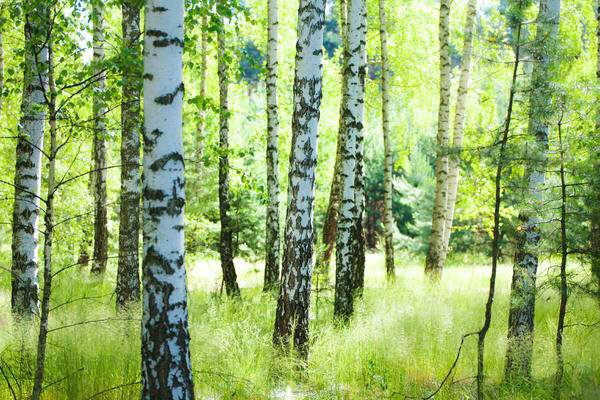
courtesy Timber Press, from Shinrin Yoku, photo credit konradlew
Walking in the forest, mindfully, is a wonderfully relaxing experience.
The book starts with the concept of nature therapy, the fight or flight response of the sympathetic nervous system, rest and digest, parasympathetic nervous system and offers explanation of the stressors of 21st century life. A somewhat technical explanation and perhaps not where someone seeking to understand just what is forest bathing, and what might be the benefits of walking in a forest. Here and there are two page asides - from Thoreau, William Blake, from Japanese poets - with brief quotes that focus on trees.
A chapter on the practice of shinrin yoku offers short suggestions for various forest therapy options: direct contact with trees (tree hugging, anyone?), autumn foliage, aroma workshops, horse riding and dog therapy, programs for children,
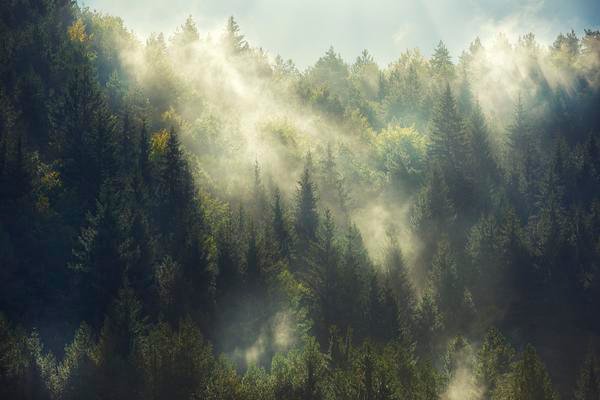
courtesy Timber Press, from Shinrin Yoku, photo credit RishLegg
a sea of clouds. This is an example of a forest therapy base using unique
natural resources to offer unusual activities to participants, notes the author.
There is a good description, further in the chapter, on walking mindfully in the forest. Become aware of your mental state, be aware of your location, become attuned to the experience of walking, be aware of the beginning, middle, and end of your stepping. Meditate. Physical exercises.
The next chapter looks at urban nature. Wood therapy - furniture, fixings and features - in the home and workplace can offer relaxation benefits, the author claims. Blindfolded participants who placed their palms on pieces of untreated white oak for just 90 seconds experienced relaxation in the form of reduced brain activity, increased parasympathetic nervous activity, reduced sympathetic nervous activity, and lower heart rate. Touching unfinished wood. I wonder if cutting, stacking, moving our firewood counts . . .
It is suggested that if you cannot walk in the forest, grow bonsai. Or, grow some plants in pots to bring nature indoors. The traditional purpose of bonsai is its contemplation, and it is suggested that sitting and looking at a bonsai produces the same relaxation effect as walking in a forest. Buy an already trained bonsai or start your own from seed or sapling. Maybe so, but caring for a bonsai is neither simple nor easy.
Another chapter looks into the science behind nature therapy. Various experiments are described, what was tested, the results. Other than the first five listed, a multi-page list of references at the back of the book all seem to have Yoshifumi Miyazaki as author or co-author. It is not clear who is the intended audience. A reader looking to explore forest bathing as a calming adjunct to a busy life probably does not need a discussion of how, for example, a group of male participants were put up in individual hotel rooms, all fed the same meals, walked in nature or in urban areas, reverse the next day, while testing their physiological responses. Percentage changes are noted, but not actual blood pressure measurements, for example. The experiments seem reasonable, the data superficially reported.
By trying to provide something for everyone, health benefits and the science behind,
The Japanese Art of Shinrin Yoku Forest Bathing offers an overview but not depth.
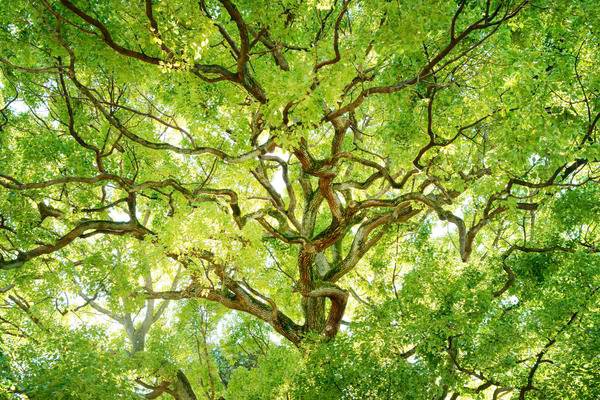
courtesy Timber Press, from Shinrin Yoku, photo credit blew_i
There is a companion book from Timber Press that quite nicely
offers ways to have a very personal exploration of forest bathing. It is
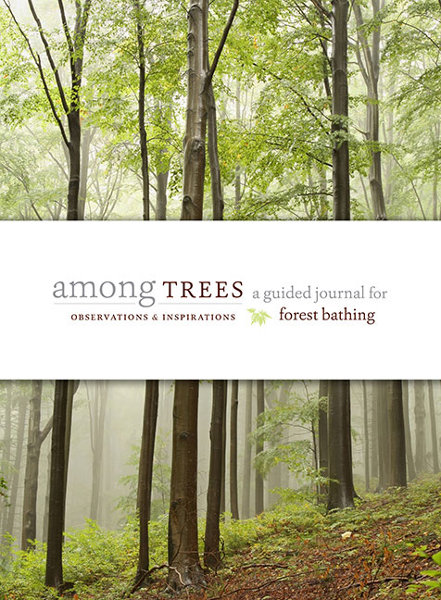
courtesy Timber Press, from Among Trees, iStock / aniszewski
Among Trees, Observations & Inspirations, a guided journal for forest bathing
This is a book you will write. It is a way to keep track, remember, review your walks in the woods. Begin with a page for each season - spring, summer, fall, winter. Plan merely the excursion location and its notable forest features. Once you go on any forest bathing journey, create an index that notes merely what was the location and what page in this journal has your notes. Each excursion log has a place to make a note of the overall scenery, an initial observation you might make, one that gradually revealed itself to you, as well as a particularly memorable detail, changes you notice in your body during the walk, and any lingering sensations or emotions. Your first walk will stand out among your memories. As time goes by, as you take more walks, this journal will help refresh your memories of the details - where was it that you sat by a pool of water, listening to the music of water splashing over the rocks.
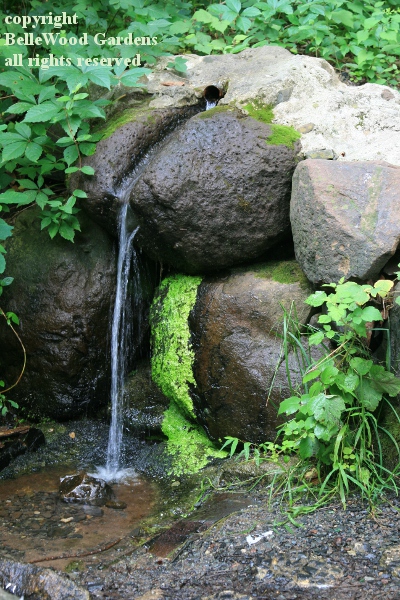
A page here and there in the journal offers suggestions for deeper perceptions - while you come to a stop and the forest seems still there are things moving individually - leaves fluttering in a breeze, perhaps, or a bird hopping along a branch. Make a note.
Occasionally the journal has a precis of one study or another. For example, a short-term memory boost for people walking through a local arboretum. Compare this image of
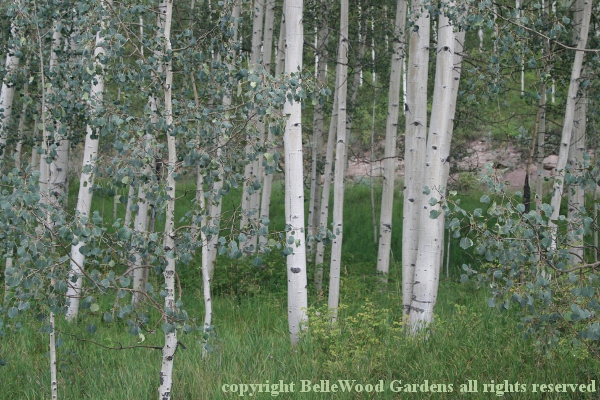
an aspen forest near Durango, Colorado, before the Rte 18 fire of 2017.
Different results to a similar, nearly hour-long walk through an urban area.
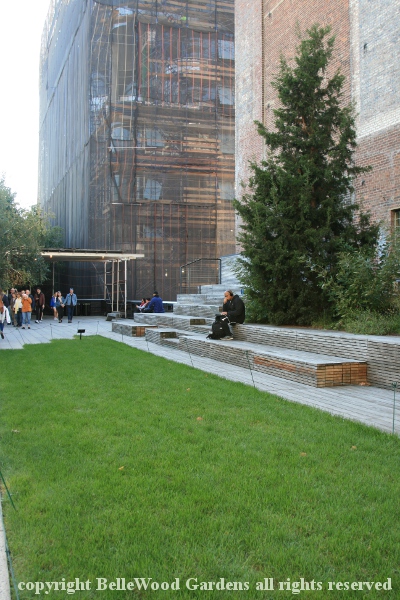
Gardens of the High Line, New York City.
These mentions are brief observations, without pretension. The goal of the journal is to have you immerse yourself in the experience of forest bathing, and also make written notes of the place, the experience, your observations, gently guided by suggestions of what to record.
Among Trees, a guided journal for forest bathing, is definitely more a do it yourself and write it all down rather than sit back and read a broader, somewhat scientific viewpoint like The Japanese Art of Shinrin Yoku Forest Bathing. The two books are inexpensive enough that you can reasonably buy both to start you off on the healthy and pleasurable practice of shinrin yoku, forest bathing.
The Japanese Art of Shinrin Yoku Forest Bathing by Yoshifumi Miyazaki
published by Timber Press, Portland, Oregon, 2018,
ISBN 978-1-60469-879-4, hardcover, $16.95
Among Trees, a guided journal for forest bathing
published by Timber Press, Portland, Oregon, 2018
ISBN 978-1-60469-889-3, hardcover, $18.95
Review copies of these books were provided by the publisher
Back to Top
Back to December 2018
Back to the main Diary Page